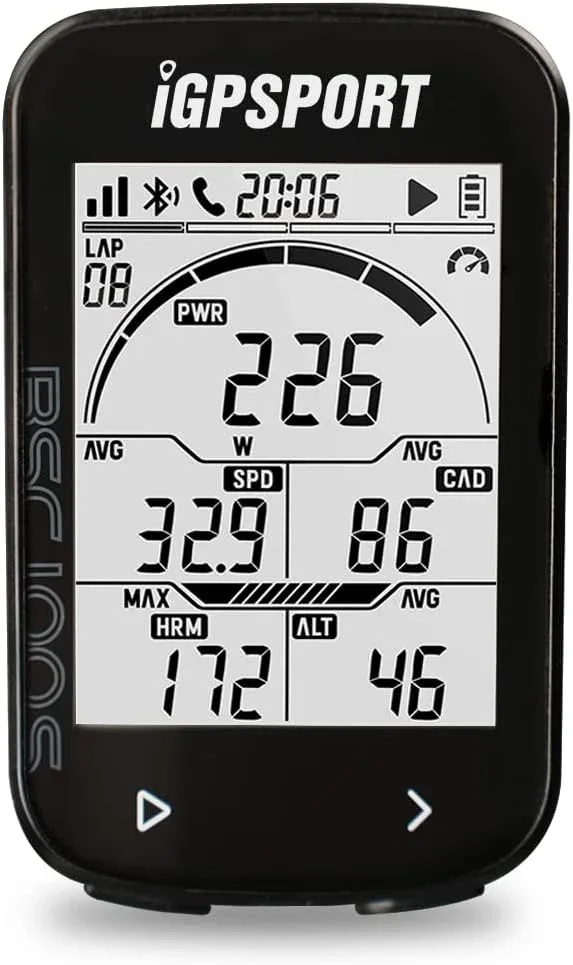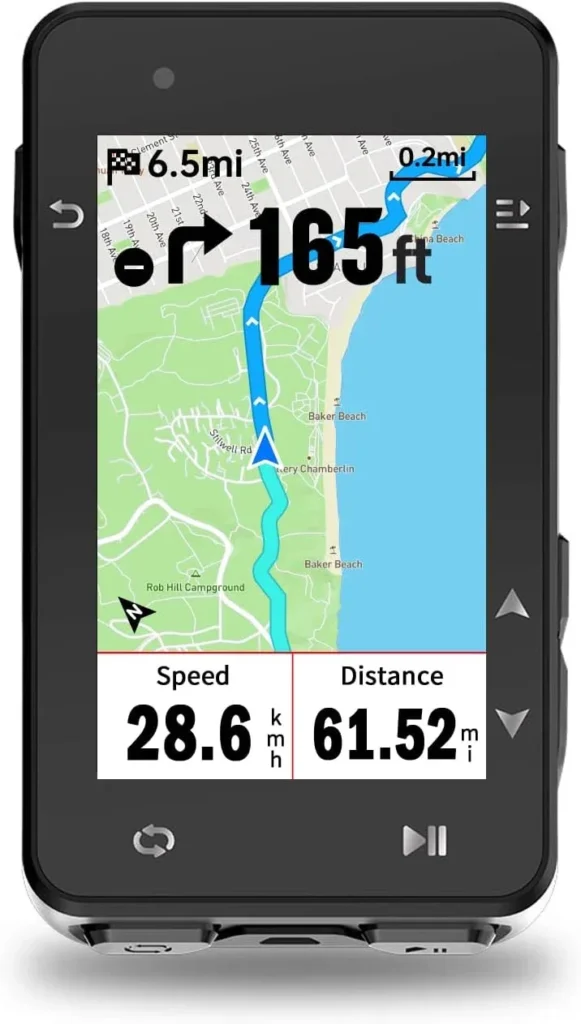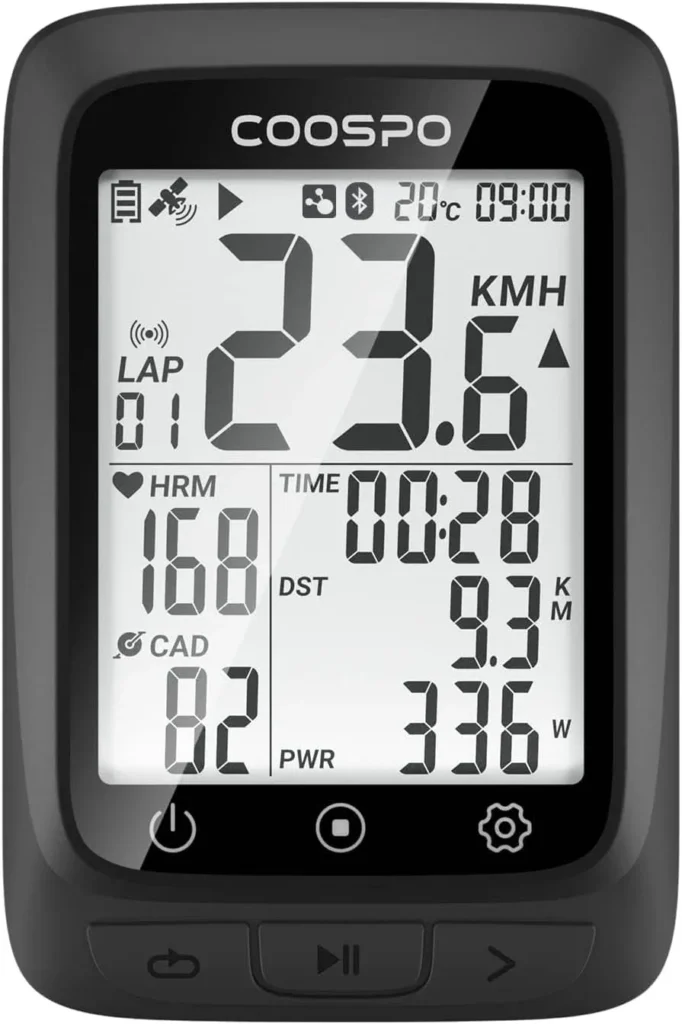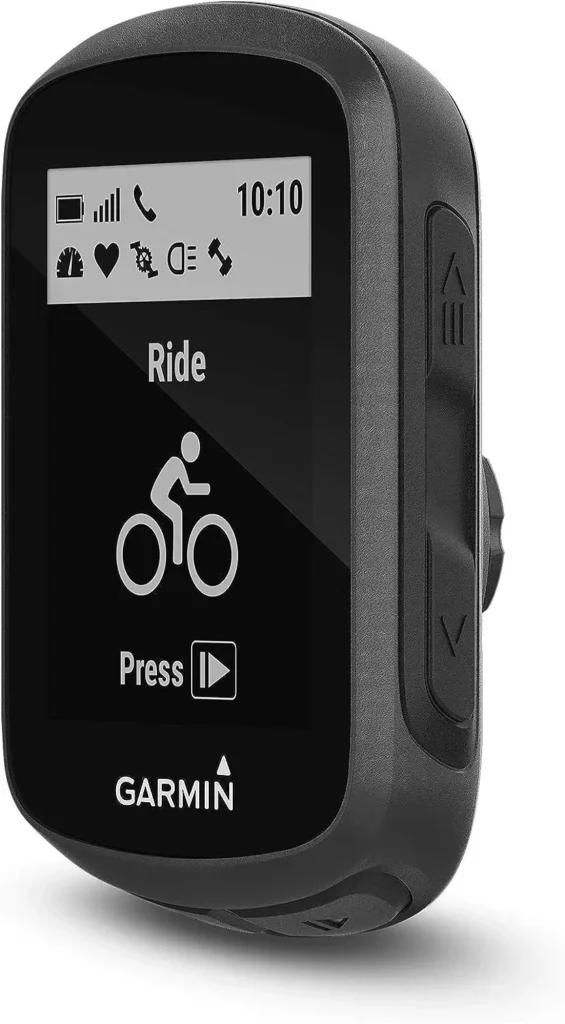Prepare to cycle more efficiently, rather than exerting unnecessary effort, as we explore our top selections that will serve as your training allies and enhance your performance. These advanced gadgets are designed to transform your cycling experience, offering route optimization and instant statistics. Gear up as we reveal the devices destined to help you cross the finish line with assurance and flair!
Summary
The Best Cycling Computer for Triathlon
#1 iGPSPORT BSC100S Bicycle/Bike

In my pursuit of a reliable cycling companion for triathlon adventures, I bought the iGPSPORT BSC100S Bicycle/Bike. Regarding durability and battery life, the iGPSPORT BSC100S stands out. Its battery longevity truly impressed me, ensuring uninterrupted tracking throughout my rides. However, I did encounter a hiccup when the device accidentally fell off my bike, resulting in a crack despite the protective film. While the product comes with a warranty, I’ve heard some concerns about difficulties securing replacements or refunds. Hopefully, the company will stand by its promise.
Navigating its features, I found the bicycle computer user-friendly, displaying comprehensive data essential for beginners and seasoned cyclists. The accompanying smartphone app, although functional, could use some improvement in stability and overall quality. It’s worth noting that the device might take some time to sync with your phone for data transfer. However, it seamlessly interacts with popular platforms like Strava, adding a convenient touch to my training routine once connected.
As I pedaled on, the iGPSPORT BSC100S’s strengths became more evident. It is long-lasting battery and accurate sensor readings ensure a seamless experience during extended rides. Despite minor button function confusion, I immersed myself in the wealth of information displayed on the screen. The device’s performance has been consistent and reliable, contributing to an enhanced training regimen. Moreover, it offers excellent value for its cost, making it a suitable choice for budget-conscious triathletes.
#2 iGPSPORT iGS630 Bike Computer

Having spent months with the iGPSPORT iGS630 Bike Computer, I’ve experienced a mix of impressive features and minor setbacks. Starting off, I encountered some initial connectivity issues when attempting to download routes, which frustrated me. However, persistent efforts and reinstalling the app eventually resolved the problem. This hiccup did make me question the software quality control.
Moving on to its performance on the road, the cycling computer proved its mettle. The setup was a breeze, especially when pairing it with my ANT+ sensors for speed and cadence. The phone app seamlessly integrated with the device, making customization of display screens straightforward. The display itself shone bright and clear, even in direct sunlight, and the large, easy-to-press buttons made navigation effortless during rides. One standout feature was the device’s ability to display text messages and incoming calls, ensuring I never missed important notifications while on the road.
The mapping capabilities of the iGS630 are worth highlighting. While creating custom routes and syncing them was sometimes a bit clunky, the turn-by-turn navigation worked well, guiding me through unfamiliar territory. The battery life exceeded expectations, lasting over 9 hours on a single ride and charging quickly when needed. Additionally, its compatibility with popular platforms like Strava further enriched my cycling experience.
#3 COOSPO Bike Computer

In my ongoing search for the perfect cycling companion, the COOSPO Bike Computer has truly stood out. After months of rigorous testing, it’s become a reliable partner on my rides. The setup was surprisingly easy, quickly syncing with my heart rate monitor and cadence sensor for accurate ride data. However, I noticed occasional GPS signal delays at the start, which taught me patience and allowed for a solid connection.
The standout feature of the COOSPO Bike Computer is its impressive battery life. It powered through a 12.5-hour century ride with a single bar remaining, a testament to its endurance. Though the time and temperature display could be more legible, the user-friendly interface, seamless app connectivity (especially with Strava), and sensor compatibility make up for it.
What truly sets the COOSPO Bike Computer apart is its exceptional value. It integrates with existing sensors effortlessly, providing accurate data that easily sync with Strava. While its GPS speed tracking could use some fine-tuning, the reliability and overall performance have exceeded my expectations. Its ability to function independently from a smartphone connection is a huge plus, making it an ideal choice for long rides in areas with spotty coverage. As I continue my triathlon journey, the COOSPO Bike Computer remains a dependable ally, enriching my training and rides with its impressive features and consistent performance.
#4 Garmin Edge® 130 Plus

My journey led me to the remarkable Garmin Edge® 130 Plus when I was embarking on a quest for the ideal cycling companion. Its user-friendly design and versatile features seamlessly integrate into my triathlon training routine. Setting it up was a breeze, and I found that it flawlessly syncs with various sensors, providing accurate and relevant data throughout my rides. The device’s compatibility with heart rate monitors and cadence sensors enhanced my training insights and allowed me to fine-tune my performance.
What’s cool is its ability to complement smartphone functionality without trying to replace it. In contrast to its predecessors, it keeps a perfect balance while providing a variety of practical functions that improve the cycling experience. The device’s Bluetooth feature can be easily toggled on or off, ensuring a seamless connection when needed. Its lightweight design and modern USB port add to its appeal, making it a sleek and practical addition to my bike setup.
The cycling computer’s navigation helps a lot on new routes. I love how it loads GPX tracks and shows clear numbers on the screen, so there is no more button fuss or phone unlocking. The battery lasts long and can recharge with a bike hub for big trips.
While the Garmin Edge® 130 Plus excels in many areas, a few minor downsides are worth mentioning. The price point is relatively higher than other options, but the extensive range of features justifies the investment. Although improved from earlier models, the interface still poses some challenges, especially in navigating various functions with multiple buttons. However, these issues are overshadowed by the device’s impressive performance, accuracy, and durability.
#5 Garmin Edge® 1040

In my experience with the Garmin Edge® 1040, I’ve found it to be quite impressive overall. This bike computer has some really cool features, like a long-lasting battery that easily lasts through even the longest rides. The display is bright and easy to read, especially helpful if you have trouble with close-up vision like me.
The navigation is a standout feature – it quickly finds routes and recalculates if you stray off course. Plus, the power guide feature is great for keeping your training in check. However, the menu system takes some time and sometimes requires multiple clicks to adjust settings.
On the downside, some integrations with sensors like heart rate monitors and power meters aren’t as seamless as I expected. And there have been occasional connectivity issues with my phone for features like weather updates and Live Connect. I also noticed that it can be a bit finicky when dismissing on-screen prompts during a ride.
Despite these minor issues, the Garmin Edge® 1040 is a solid bike companion. The battery life and navigation capabilities alone make it worth the investment. While the user interface could be improved, the display quality and overall functionality make it a valuable tool for triathletes like me.
How to Choose the Right Cycling Computer for Triathlon
When choosing the right cycling computer for your triathlon adventures, there are these several vital factors to consider.
GPS and Navigation: One of the most important aspects to look for is reliable GPS and navigation. Having accurate mapping and turn-by-turn directions can be a game-changer during a race or training session. This feature lets you focus on your performance rather than getting lost on unfamiliar routes. Garmin Edge® 1040, for instance, has proven to excel in this aspect, offering quick route calculations and clear directions.
Battery Life: Another crucial consideration is battery life. Triathlons can be long and demanding, and the last thing you want is for your cycling computer to die mid-race. Look for a device that can go the distance with you and offers extended battery life to ensure it lasts through your entire event.
Sensors: Compatibility with sensors is also worth evaluating. Triathletes often rely on heart rate monitors, power meters, and cadence sensors to optimize their training and performance. Choosing a cycling computer that seamlessly integrates with these sensors can provide you with valuable insights to fine-tune your workouts.
User-friendly interface and Customization: Besides these features, a user-friendly interface and customization options can significantly enhance your experience. During a race or training session, you want to be able to access and interpret your data quickly and efficiently. Changing data, arranging screens, and moving around easily really matters.
Durability: Lastly, consider the durability and ruggedness of the cycling computer. Triathlons can expose your equipment to various weather conditions and potential impacts. Opt for a device that can withstand the challenges of outdoor training and racing, ensuring it remains reliable throughout your journey.
